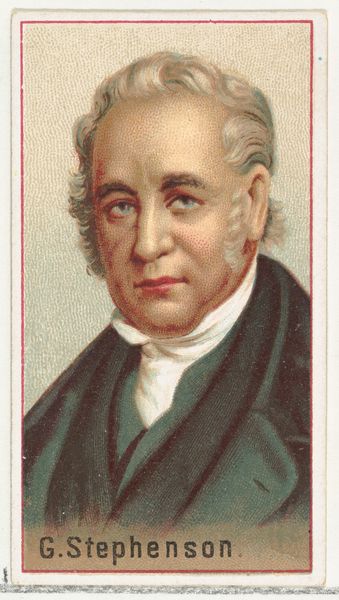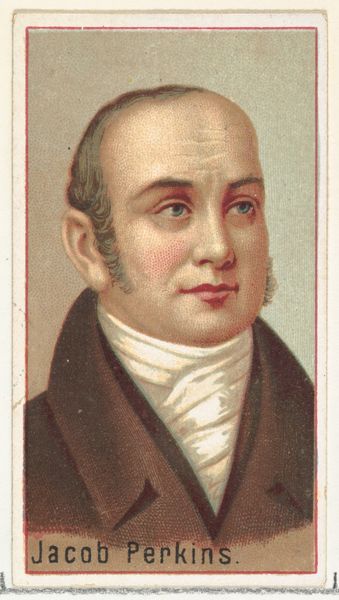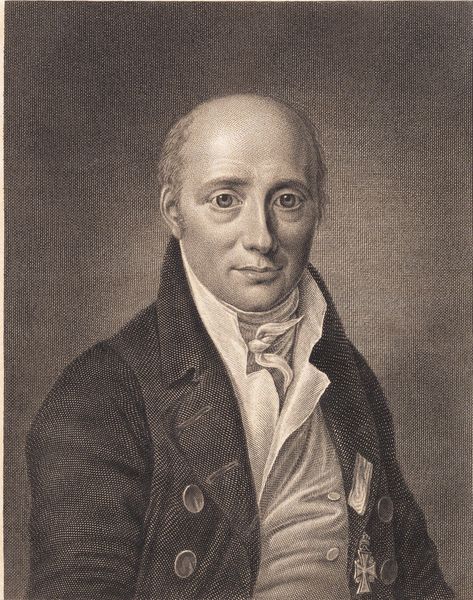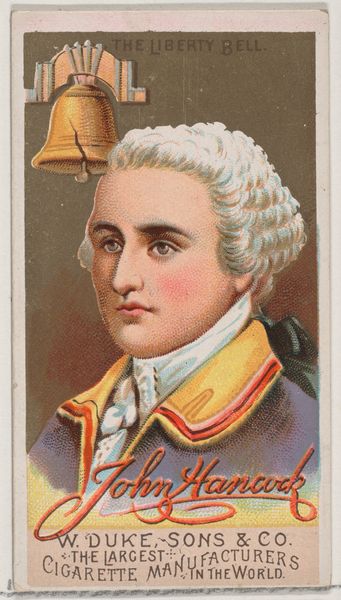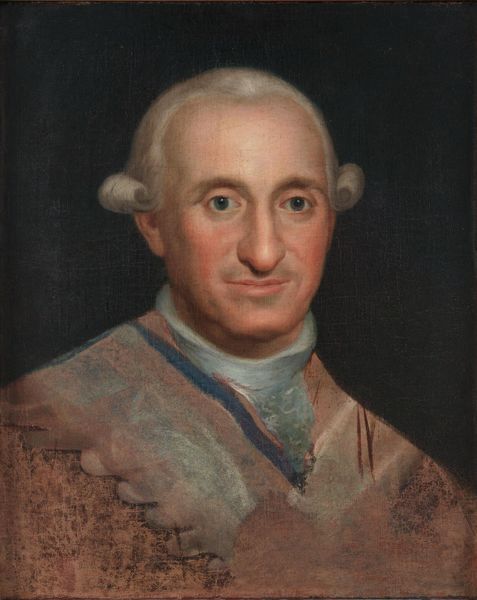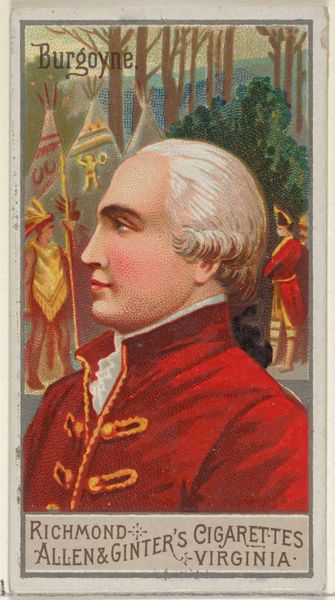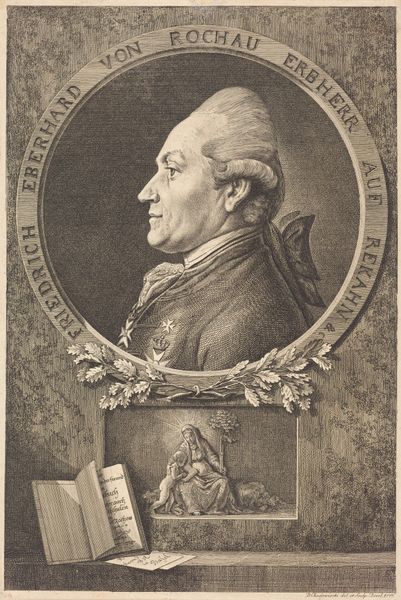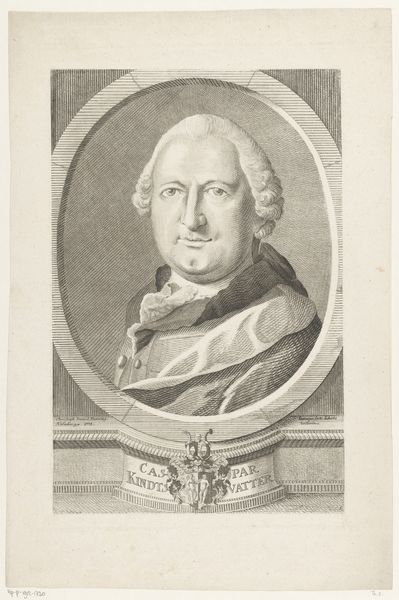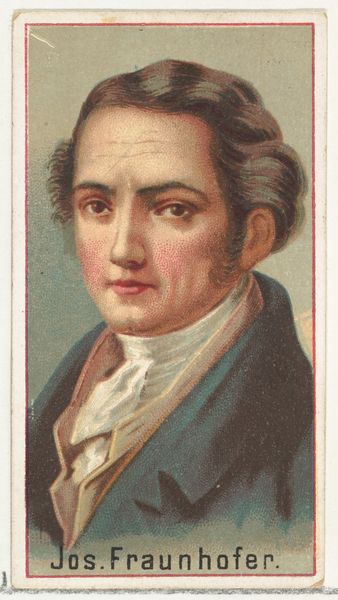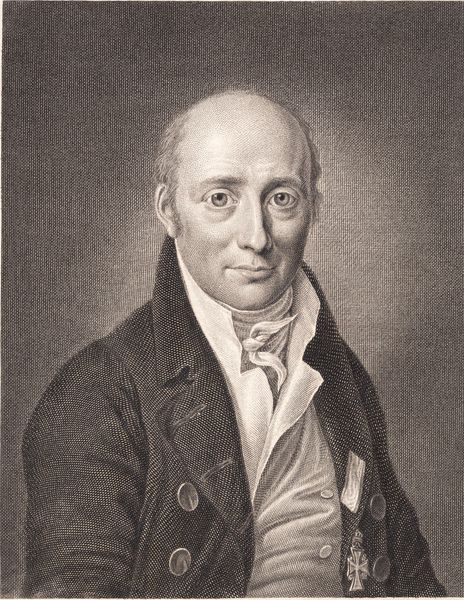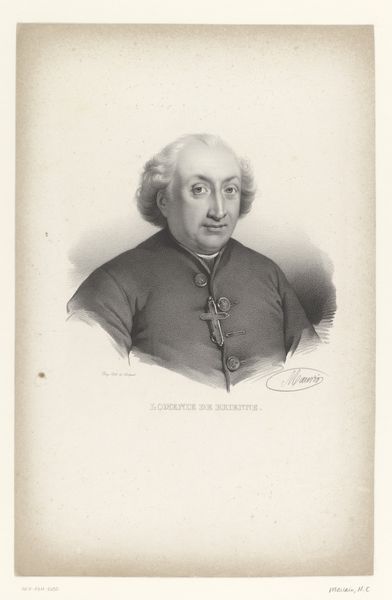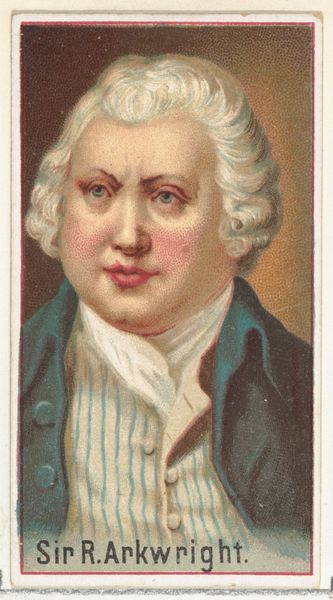
Benjamin West, from the series Great Americans (N76) for Duke brand cigarettes 1888
0:00
0:00
drawing, print
#
portrait
#
drawing
# print
#
impressionism
#
caricature
#
oil painting
#
history-painting
#
academic-art
#
portrait art
Dimensions: Sheet: 2 3/4 × 1 1/2 in. (7 × 3.8 cm)
Copyright: Public Domain
Editor: This is "Benjamin West, from the series Great Americans (N76) for Duke brand cigarettes," created in 1888. It’s a print, and it looks like it was designed as a collectible card. The portrait itself has a very formal feel, but that backdrop is so lively! What historical narratives do you see being played out here? Curator: It’s interesting, isn't it? The combination of high art—the portrait of an acclaimed historical painter—and low art—a cigarette card, a mass-produced item designed for consumption. West, a Pennsylvania-born artist who became president of the Royal Academy, made history paintings. What’s especially significant is seeing that historical moment being deployed as commercial propaganda. What kind of “greatness” is being sold here, and to whom? Who benefits from the narratives being put forth, and whose stories are being erased or simplified? Editor: So you’re saying it's about who gets to define "greatness"? Curator: Precisely. And who profits from that definition. Consider how tobacco companies at the time often strategically marketed their products, frequently using figures or symbols tied to ideals of patriotism, success, and masculinity, thus aligning cigarette smoking with a very specific construction of the “American Dream.” Are we celebrating West or using his image to endorse harmful consumption habits? Is West's success as a painter used to legitimize a colonial understanding of the United States' origin? Editor: That makes me think about how the ‘American Dream’ often excluded marginalized groups. Seeing it attached to something like cigarettes feels… unsettling. Curator: Exactly. We have to examine these images critically and consider the ideologies they promote and reinforce. How does this image both reflect and construct historical and social values? Editor: I hadn't considered how the image functioned beyond a simple advertisement. It’s definitely given me a new perspective. Thanks! Curator: My pleasure. Recognizing the layers of meaning embedded in everyday images helps us understand their impact on society and question the stories they tell.
Comments
No comments
Be the first to comment and join the conversation on the ultimate creative platform.
